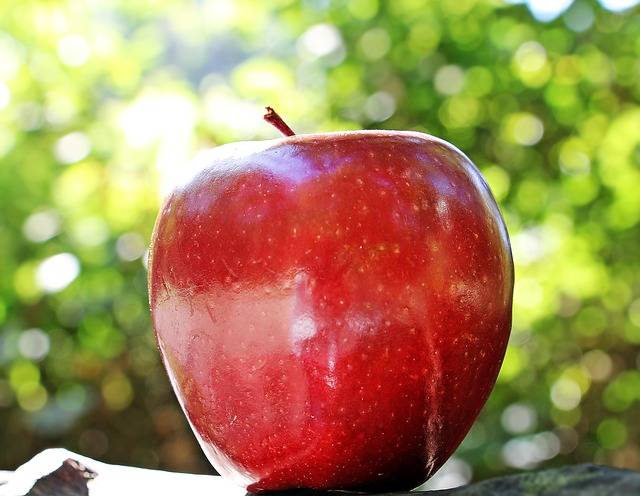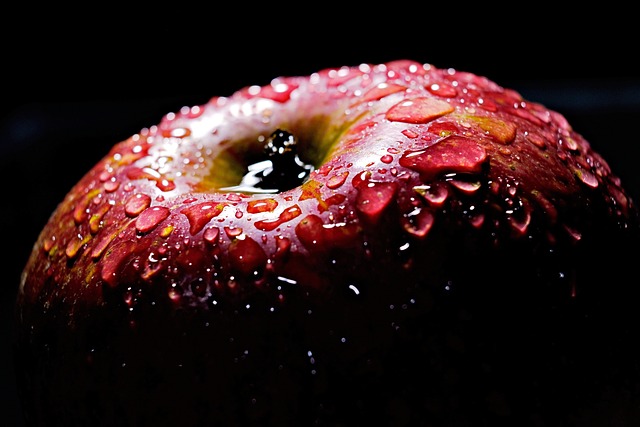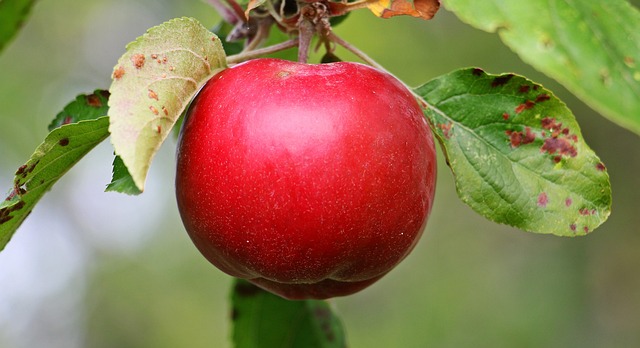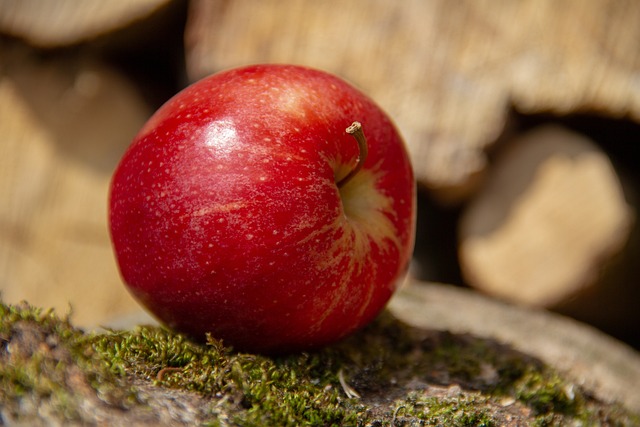
Red apples, such as Gala and Fuji, are visually striking and nutritionally rich due to their anthocyanin pigments, which also make them a good source of antioxidants. These varieties are typically sweeter and consumed fresh, while green apples like Granny Smith, lacking anthocyanins, remain green and offer a tart taste and firmer texture, making them ideal for cooking. Both types contribute different nutrients and fiber to the diet and have distinct health benefits. The cultivation of red apples involves careful orchard management and post-harvest handling to maintain freshness and flavor. Red apples ripen to become sweeter and are versatile in the kitchen, enhancing desserts with their sweetness and adding a tangy twist to savory dishes. Green apples contribute anti-inflammatory compounds like quercetin and kaempferol and are excellent in salads for their crunch and refreshing taste. Proper storage techniques can keep red apples fresh for weeks, allowing for year-round enjoyment of their unique qualities. Red apples are a versatile and healthy choice, whether enjoyed fresh or used as an ingredient in various culinary applications.
Discover the juicy world of apples, where green and red varieties each offer a distinct taste and nutritional profile. This article peels back the layers to explore the differences between these two apple hues, from their journey from orchard to table, to their unique health benefits and culinary applications. Whether you’re a fan of the crispness of green apples or the sweetness of red, this guide will enhance your appreciation for these versatile fruits. Dive into the textures, flavors, and best practices for storing and preparing both types, as well as their role in a balanced diet and their impact on the environment. From recipe ideas to insights into apple genetics, this comprehensive overview is sure to satisfy your curiosity about red apples and beyond.
- Understanding the Varieties: The Difference Between Green and Red Apples
- The Journey of an Apple: From Orchard to Table
- Nutritional Comparison: What Sets Green Apples Apart from Red?
- Culinary Uses: Cooking with Green and Red Apples
- Storage and Shelf Life: Keeping Your Apples Fresh Longer
Understanding the Varieties: The Difference Between Green and Red Apples

When it comes to apples, the hues can tell a story about their nature and taste. Red apples, often synonymous with traditional apple varieties, offer a distinct flavor profile that sets them apart from their green counterparts. The red pigment in these fruits, known as anthocyanins, is not just a visual indicator but also a signal of antioxidant content, which can contribute to health benefits. Among the most popular red apple varieties are Gala and Fuji, both prized for their sweetness and the vibrant color that signals their ripeness. On the other hand, green apples, such as Granny Smith, are known for their tartness and firmer texture. The absence of anthocyanins in green apples means they remain green regardless of their maturity, offering a contrast not just in appearance but also in taste and culinary uses. Understanding these differences is key for consumers who prefer one type over the other based on flavor preferences or intended recipes. Red apples, with their sweetness, are often favored in fresh consumption, while green apples’ tartness makes them ideal for cooking, where they can impart a tangy flavor to desserts and savory dishes alike. Both types of apples contribute essential nutrients and fiber to the diet, making them both healthy and versatile choices within the apple variety spectrum.
The Journey of an Apple: From Orchard to Table

Red apples embark on a fascinating journey from the moment they blossom on the branches of apple trees in orchards to the moment they grace dining tables. This voyage begins in the orchard, where careful cultivation and selection of apple varieties ensure the best possible fruit. Apple farmers monitor conditions, tending to each tree, pruning, and managing pests to protect the crops and optimize the quality of the red apples that will later ripen to perfection. The ripening process is a delicate balance of sunlight exposure and moisture, critical for the development of the apple’s characteristic crimson hue and the sweetness inherent in these varieties.
Once ripe, red apples are harvested by hand or with machinery designed to handle them gently to avoid bruising and damage. After harvesting, the journey continues as these apples undergo a series of quality checks. Depending on their destination, they may be refrigerated to prolong their shelf life and maintain freshness during transportation. This careful handling is essential for preserving the crisp texture and robust flavor that red apples are known for. Upon arrival at markets or stores, consumers can select from a bountiful display of these vibrant fruits, unaware of the meticulous process that brought them from the orchard to their tables. Red apples’ journey exemplifies the dedication to quality and care in the agricultural industry, ensuring that each bite is as fresh and delicious as possible.
Nutritional Comparison: What Sets Green Apples Apart from Red?

Green apples and red apples, while often considered interchangeable in culinary and nutritional contexts, exhibit distinct profiles that offer unique health benefits. Both varieties belong to the same species, Malus domestica, but differ in color due to varying levels of anthocyanin pigments, which are more concentrated in the skin of green apples. These pigments are not just responsible for their vibrant hues but also serve as potent antioxidants. In terms of nutritional comparison, green apples tend to have higher levels of certain phytonutrients compared to their red counterparts. For instance, they often contain more Granny Smith-specific flavonoids like quercetin and kaempferol, which are associated with anti-inflammatory properties. Additionally, the firm texture of green apples can result in a higher concentration of dietary fiber when compared to ripe red ones. This difference is significant for those looking to optimize their digestive health as fiber plays a crucial role in promoting regularity and aiding in the management of blood sugar levels. The varying stages of ripeness also affect the concentrations of vitamins C and K, with unripe green apples typically containing higher amounts of these nutrients. Red apples, on the other hand, as they ripen, develop more sugars, which can enhance their sweetness and make them a preferred choice for those with a penchant for a sweeter taste. Ultimately, both varieties offer a range of health benefits, but the choice between green and red apples can be influenced by personal preference, desired nutritional content, and the specific health goals one aims to achieve.
Culinary Uses: Cooking with Green and Red Apples

Red apples, with their rich flavor profile and vibrant hue, offer a versatile culinary experience. They are commonly used in a variety of sweet dishes, where their characteristic sweetness complements desserts such as apple pie, crumbles, and tarts. The deep red variant, often referred to as Crimson Crisp or Honeycrisp, adds a distinct, almost tropical fruity note that enhances the flavor complexity of these treats. In contrast, green apples, with their crisp texture and tart taste, are ideal for culinary uses that require a firmer texture and a balance of sweetness against other ingredients. They excel in savory applications like salads, where they provide a refreshing crunch and a subtle tang that pairs well with a variety of dressings and complements ingredients such as nuts, blue cheese, or crisp greens. Additionally, green apples can be baked, roasted, or sautéed to bring out their natural sweetness and tenderness, making them suitable for both sweet and savory dishes. Whether chosen for their sweet flavor or tart contrast, red and green apples alike are indispensable ingredients in the culinary world, offering a range of options from refreshing snacks to complex recipes that celebrate their unique characteristics.
Storage and Shelf Life: Keeping Your Apples Fresh Longer

When it comes to maintaining the crisp and tart flavor of red apples, proper storage is key to extending their shelf life and ensuring they remain fresh for an extended period. To maximize the longevity of your red apples, avoid storing them in the refrigerator’s crisper drawer just yet; instead, keep them at room temperature away from direct sunlight until they reach peak ripeness. This allows the fruit to continue developing its natural sugars and flavors. Once fully ripened, a cool environment is necessary to slow down the ripening process and prevent spoilage. The ideal storage condition for red apples is in a well-ventilated space with consistent temperatures around 30 to 40 degrees Fahrenheit, with high humidity of about 90 to 95 percent. This environment can be created using a plastic bag lightly sealed or a moistened paper towel placed in the storage container. Regularly check the apples and ventilate the storage area to prevent mold growth. By following these storage guidelines, you can enjoy your red apples’ juicy and tangy goodness for several weeks after they’ve been picked from the store or harvested from your tree.
Green apples, often overshadowed by their red counterparts, offer unique nutritional benefits and culinary applications. This exploration into the varieties, journey, and comparisons of green versus red apples sheds light on their distinct characteristics. As detailed, green apples boast a different flavor profile, texture, and nutritional content that can enhance both health and dishes. Their longer shelf life and versatility in cooking make them an underappreciated staple. Red apples, equally diverse, are renowned for their sweetness and wide appeal. Both types enrich our diets and culinary experiences, reminding us of the natural variety we can enjoy. When selecting your next apple, consider the unique offerings of each to suit your taste and needs.





